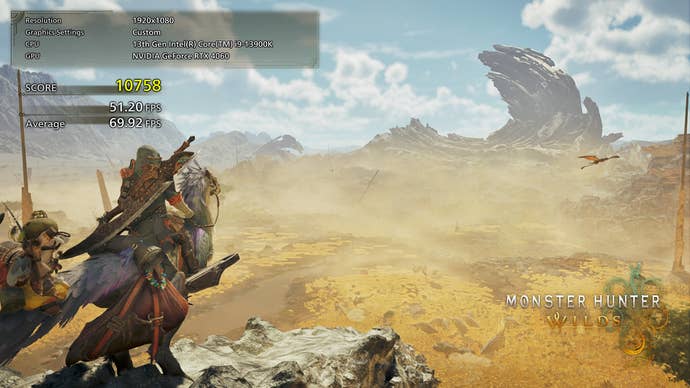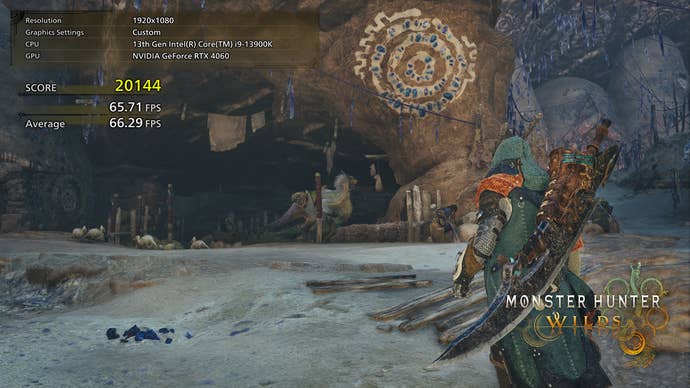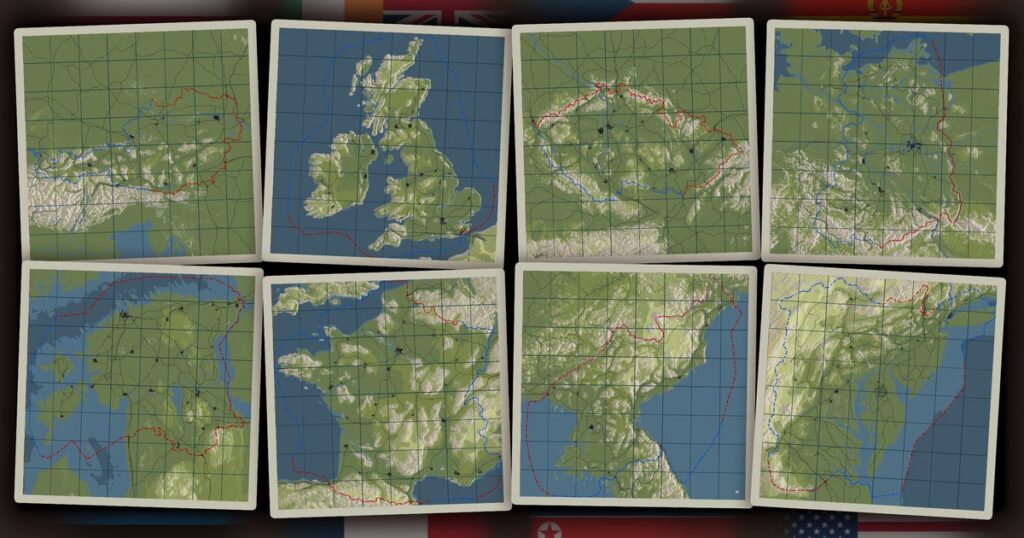Just like Capcom’s German social media marketing, Monster Hunter Wilds has a new set of PC requirements, often less extravagant before launching on February 28. In addition, there is an independent standard score tool that you can download from the Steam page of the game, so you can see the RPG way of Beast-Biffing will run on your hardware.
In theory, these are great developments. Lower requirements mean a more widely accessible game and a benchmarking tool that consists of six minutes of combined cinema and free-relocation simulation-reassurance and responsibility for other pre-advertising phase. Sadly, there are two issues. One, the complete score confirmed that the Monster Hunter Wilds will run like Goulash stagnant on low -level PCs and two, I’m not sure that the minimum specifications are modified even reliable.
In addition to the remarkable decline from 140 GB to 75 GB of the necessary SSD space – Dr. Weird will approve – the new Min specifications usually reduce the CPU and their graphics card required by one step. For example, the minimum NVIDIA GPU has dropped from the standard GTX 1660 to the standard GTX 1660 and you can escape the Intel Core i5-10400 instead of the previously listed Core i5-10600. Cool! Except for the regulation, this is still only 1080p management when using both frames and frames, where the wild supports in NVIDIA DLSS 3 and AMD FSR 3.1 varieties.

This is not a way to create frames used, all. Because it requires a high ‘base’ of the frames that are displayed regularly to insert the interpolation frames and to compensate for the input lag, the actual use of Frame Gen is to make the game that has run well and make them look properly, smooth bleeding. Based on it to make an artificial PC 30FPS PC, Daft, because it will still feel tangible, from lack of input response, like it runs at a speed of 20 frames per second or anything. Well, in terms of ‘real’ frame, it is.
MHW’s benchmark tool shows this in action. Because I did not have GTX 1660, I was a bit cheeky and tested GTX 1060 instead, although the rest of my I9-13900K test rig to help make a difference. At 1080p with the highest level and the lowest FSR operates on its extremely (disgusting) efficiency mode, I ended with an average of only 26fps, with a decrease of maintenance to 17-20fps in open world bits. With the frame creation, the average has increased to 45fps, but in a real game script will feel crap because the controller or input of your mouse/keyboard only registers half of the visible frames.
Moreover, GTX 1660 is only a bit faster than the good day of GTX 1060, so even if you follow the minimum specifications, by the recognition of the benchmark tool, you will continue to receive these 30fps reductions. There is also bad news here for steam decks: Running benchmarks, but on the same extremely low performance complex/FSR, it averages 27fps. Well, again, put it beyond the feasibility assistance of creating frames.

If there is a negative side with all of this, at least it seems that MHW has a better rate with a newer GPU. RTX 4060, the most affordable price in NVIDIA’s DLSS 3 desktop tags, has recorded a remarkable 62fps at 1080p with both high -ray monitoring effects and high graphics (plus a hand from advanced DLSS in quality). Adding Frame genes, this is much more meaningful at this performance, which has lifted it to 98fps. And at the opposite head of the Kit spectrum, the new RTX 5080 was pumped out 72fps at 4K speed, using the maximum mixture of Ultra Graphics, High Ray Tray and DLSS quality. Making 110fps with that frame gene, although it is not like creating multi -frames of DLSS 4 supported.
I will try to give the whole game a more comprehensive test after it is ready to launch; It will be interesting to see exactly what you will need for 30fps or 60fps at 1080p without creating its frame on scales. Well, again, not great, even if these early benchmarks are often in the concept. Upscalers like DLSS have been used too much as compensation for the excessive technical needs of recent games, and will be ashamed to see the frame gene goes in the same way.



